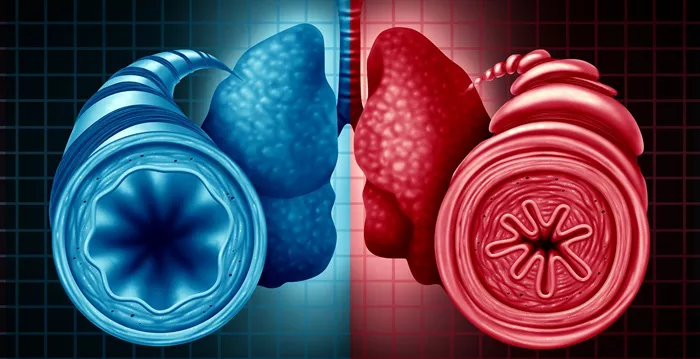Orthostatic hypotension (OH) and benign paroxysmal positional vertigo (BPPV) are two distinct medical conditions that can significantly impact a person’s quality of life. While both conditions involve dizziness and balance issues, they stem from different underlying mechanisms and have unique clinical implications. Understanding the differences between these two disorders is crucial for accurate diagnosis and effective management. This article will explore the definitions, causes, symptoms, diagnostic methods, treatment options, and the relationship between orthostatic hypotension and BPPV.
What Is Orthostatic Hypotension?
Definition
Orthostatic hypotension is a condition characterized by a significant drop in blood pressure when a person transitions from lying down to standing up. This sudden change can lead to symptoms such as dizziness, lightheadedness, fainting, or even falls.
Causes
Several factors can contribute to orthostatic hypotension:
Dehydration: Insufficient fluid intake can lead to decreased blood volume.
Medications: Certain medications, such as diuretics or antihypertensives, can lower blood pressure.
Nervous System Disorders: Conditions like Parkinson’s disease or multiple system atrophy affect the autonomic nervous system.
Age: Older adults are more susceptible due to age-related changes in blood pressure regulation.
Prolonged Bed Rest: Extended periods of inactivity can weaken the body’s ability to adjust blood pressure.
Symptoms
Common symptoms of orthostatic hypotension include:
- Dizziness or lightheadedness upon standing
- Blurred vision
- Weakness or fatigue
- Nausea
- Fainting spells
These symptoms can vary in severity and may be triggered by rapid changes in posture.
Diagnosis
Diagnosing orthostatic hypotension typically involves measuring blood pressure in different positions:
Initial Measurement: Blood pressure is measured while the patient is lying down.
Standing Measurement: After standing for one to three minutes, blood pressure is measured again.
Criteria for Diagnosis: A diagnosis is confirmed if there is a drop of at least 20 mmHg in systolic blood pressure or 10 mmHg in diastolic blood pressure upon standing.
Treatment Options
Treatment for orthostatic hypotension focuses on lifestyle changes and medication:
Increased Fluid Intake: Drinking more fluids helps expand blood volume.
Dietary Changes: Increasing salt intake can help retain fluids but should be done under medical supervision.
Compression Stockings: These help improve circulation and prevent blood pooling in the legs.
Medications: In some cases, medications like fludrocortisone or midodrine may be prescribed to raise blood pressure.
What Is Benign Paroxysmal Positional Vertigo?
Definition
Benign paroxysmal positional vertigo (BPPV) is a vestibular disorder that causes brief episodes of vertigo when the head is moved in certain positions. It occurs due to dislodged calcium carbonate crystals (otoconia) in the inner ear.
SEE ALSO: How to Manage Hypotension After Spinal Anesthesia?
Causes
The primary cause of BPPV is the displacement of otoconia from their normal location in the utricle of the inner ear into one of the semicircular canals. This displacement can occur due to:
Head Injury: Trauma can dislodge otoconia.
Aging: Age-related degeneration increases susceptibility.
Inner Ear Disorders: Conditions affecting the inner ear may contribute.
Symptoms
Symptoms of BPPV include:
- Spinning sensation (vertigo) triggered by specific head movements
- Dizziness
- Balance problems
- Nausea
- Lightheadedness
These episodes are usually brief, lasting less than a minute, but they can be distressing and lead to anxiety about movement.
Diagnosis
Diagnosing BPPV typically involves:
Clinical History: A thorough history of symptoms and triggers.
Dix-Hallpike Maneuver: A specific test where the patient’s head is moved into certain positions to provoke vertigo and observe eye movements (nystagmus).
Treatment Options
Treatment for BPPV often includes:
Canalith Repositioning Maneuvers: Techniques like the Epley maneuver help reposition dislodged otoconia back into their proper place.
Vestibular Rehabilitation Therapy (VRT): Exercises designed to improve balance and reduce dizziness.
Medications: Occasionally used to manage nausea but not typically recommended for long-term use.
Key Differences Between Orthostatic Hypotension And BPPV
While both conditions involve dizziness, they differ significantly in their causes, symptoms, and management strategies:
| Feature | Orthostatic Hypotension | Benign Paroxysmal Positional Vertigo |
| Definition | Drop in blood pressure upon standing | Brief episodes of vertigo with head movement |
| Causes | Dehydration, medications, nervous disorders | Dislodged otoconia in the inner ear |
| Symptoms | Dizziness, fainting upon standing | Spinning sensation triggered by position |
| Diagnosis Methods | Blood pressure measurements | Dix-Hallpike maneuver |
| Treatment Options | Fluid intake, medications | Canalith repositioning maneuvers |
Relationship Between Orthostatic Hypotension And BPPV
Recent studies have explored potential links between orthostatic hypotension and BPPV. Some research suggests that patients with BPPV may experience orthostatic dizziness due to fluctuations in blood pressure during positional changes.
Mechanisms of Interaction
Vestibulosympathetic Reflexes: The vestibular system plays a role in regulating blood pressure through reflexes that respond to changes in body position. Disruption in these reflexes may contribute to both conditions.
Autonomic Dysfunction: Individuals with autonomic dysfunction may experience both orthostatic hypotension and BPPV due to impaired regulation of blood flow and balance.
Increased Fall Risk: Patients with either condition may have an increased risk of falls due to dizziness and balance issues.
Conclusion
Orthostatic hypotension and benign paroxysmal positional vertigo are two distinct but occasionally overlapping conditions that impact individuals’ balance and overall well-being. While orthostatic hypotension primarily involves cardiovascular regulation upon changing positions, BPPV relates specifically to inner ear disturbances affecting balance.
By recognizing the unique characteristics of orthostatic hypotension and BPPV, healthcare professionals can better support patients in managing their symptoms and improving their quality of life. Further research into the relationship between these two conditions may provide additional insights into effective treatment strategies and enhance patient care outcomes.
Related topics:


